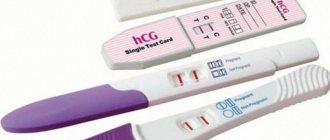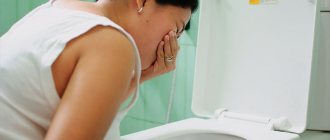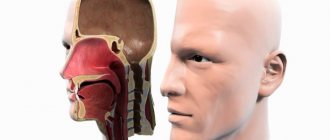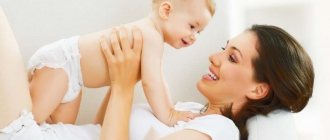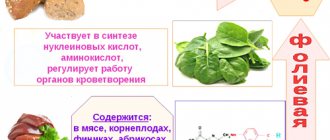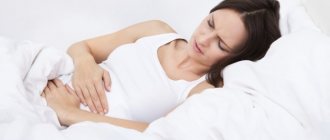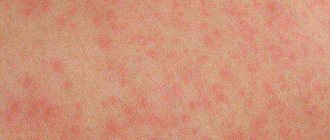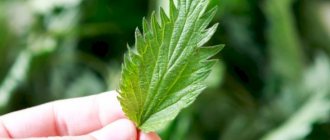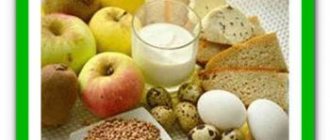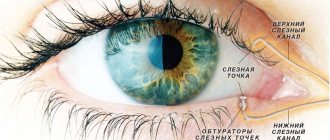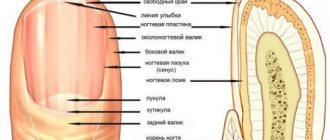Every year the number of infertile couples is growing. According to statistics, there are even more couples who fail to get pregnant for a year or more. There are many reasons for this. To accurately determine the source of the problem, the couple will need to undergo a comprehensive examination.
One of the most common causes of infertility remains situations when there is no ovulation in the menstrual cycle. In this case, the egg cannot leave the follicle or cannot mature, and, as is known, pregnancy cannot take place without ovulation. In such cases, you need to induce ovulation. The best option would be treatment with medications prescribed by a doctor. However, there is another way - stimulating ovulation with folk remedies, that is, ordinary herbs.
What are the benefits of folk stimulants?
The main stimulator of ovulation among folk remedies are phytohormones. Their task is to replenish the missing hormones in the body and restore the process of maturation of the follicle for the further release of the egg.
Recently, people have become accustomed to relying on other people's experience and feedback from others. They think that folk remedies cannot harm health. However, everything can be the other way around - any remedy has the ability to both heal and harm the body, if you do not know the exact ratios in the recipe or do not know the exact dosage regimen. Therefore, it is recommended to consult a doctor before using a folk remedy when there is no ovulation. This will definitely prevent negative effects on the body.
In addition, combining medicinal and traditional methods of treatment is strictly prohibited, otherwise it may cause hormonal imbalance.
During the entire process of stimulating ovulation, it is worth monitoring the ovaries using folliculometry. Thanks to this procedure, you can see the effect of the folk method. However, do not forget that the result comes much later for drug stimulation of ovulation. The entire period will take about 3-4 menstrual cycles.
In general, with the help of herbal medicine, many processes in the body are improved:
- Endometrial growth is stimulated;
- The functioning of the ovaries is stabilized;
- The growth of the follicle and the maturation of the egg are improved;
- The balanced functioning of hormones in the second phase of the menstrual cycle is regulated;
- The ability of the fertilized egg to penetrate the uterine wall for further growth increases.
Diagnostics
Whether ovulation occurs during the menstrual cycle can be determined at home or in the clinic with the help of a specialist.
Determining ovulation at home is carried out in several ways:
- Measuring your basal temperature and keeping a chart will show the days on which ovulation is possible. The temperature on ovulation days rises to 37, and on normal days it is approximately 36.6. It is recommended to carry out measurements within 2-3 months for a more accurate result.
- Use closer to the middle of the ovulation test cycle. The test can be purchased at a pharmacy.
- Calculation of ovulation according to the calendar depending on the duration of the menstrual cycle. This method is not suitable for women whose cycles are irregular.
In a clinical setting, an additional method for determining ovulation is diagnostics using ultrasound. The procedure is carried out repeatedly on the days specified by the doctor.
Symptoms that indicate that ovulation is beginning:
- the discharge becomes abundant, transparent, similar to egg white;
- discomfort in the lower abdomen, painful, pulling sensations;
- the breast is swollen and painful;
- increased sexual desire.
By listening to her body every month, a woman can independently determine whether she is ovulating or not.
Before restoring ovulation, the doctor will offer the patient examinations.
Diagnostic measures include:
- ovulation test;
- blood test for hormones;
- Ultrasound of the pelvic organs;
- curettage of the endometrium of the uterus for diagnostic purposes.
In a hospital setting, an ovulation test is carried out using a test strip or a digital test. An ovulatory microscope is also used to determine ovulation.
Blood tests for hormones include:
- FSH;
- LH;
- TSH;
- prolactin;
- testosterone;
- DEAS;
- cortisol;
- Free T4 and T3;
- 17 hydroxyprogesterone.
At the discretion of the doctor, additional hormones may be prescribed or, conversely, a smaller amount of hormones to be determined. The analysis is taken on certain days of the menstrual cycle, which are also prescribed for the patient by a specialist. When donating blood for hormones, it is important to follow your doctor’s recommendations and remain calm.
Ultrasound is performed several times during the cycle on days indicated by the doctor. The sonologist will monitor the development of the follicle, changes in its condition and the moment of rupture. Ultrasound also evaluates the condition and functioning of the ovaries and fallopian tubes.
Curettage for diagnostic purposes is carried out in the second phase of the menstrual cycle, so as not to cause heavy bleeding from the uterus. The doctor will additionally instruct the patient about preparation for the procedure and its features.
Herbs that help in the treatment of anovulation
What to do if there is no ovulation? For help, you can turn to traditional methods, that is, to ordinary herbs. In ancient times, decoctions and infusions of herbs were the only “medicines” and the recipe was “dispensed” by grandmother healers. But they also talked about what herbs help you get pregnant, what the dosage should be and when you can drink these potions.
The most effective herbs in this matter are the following representatives of the plant family:
- Sage is naturally created with phytoestrogen, which is very similar to the estrogen found in the female body. The tincture is prepared from 50 grams of dried plant and 500 ml of boiled water. The finished decoction should be left to steep for 30 minutes and you can start taking it. The course of therapy begins on the 5th day of the cycle and drinks 45 ml 4 times a day.
- Linden also contains a large number of phytohormones. To increase the effect of folk remedies, you can combine two remedies - linden and sage. To do this, take 50 grams of sage and 70 grams of linden, pour half a liter of boiling water. Let it brew for half an hour, and take 25 grams three times a day. Treatment should begin on the 7th day of the cycle.
- Who didn’t apply plantain to wounds on their body in their childhood? But it turns out that this herb helps in the absence of ovulation. The recipe is as follows: 50 grams of plantain, pour half a liter of boiling water and cook this mixture in a steam bath for about 3-4 minutes. Let it brew and cool for an hour. Then you can take 40 ml three times a day.
- Many have heard that the hog uterus has helped many couples become pregnant. It also works in the case of anovulatory cycles. To do this, take 60 mg of herb in a thermos and pour half a liter of boiling water. Leave for 12 hours. You need to take 150 ml 4 times a day.
- Rose petals contain vitamin E, which has a positive effect on the functioning of the ovaries. The recipe is as follows: 50 grams of petals are poured with boiled water. Boil the broth for 10 minutes and leave for an hour. Drink 15 ml at night.
- The grass knotweed has proven itself to be effective in stimulating the maturation and release of eggs. To prepare the decoction, take 80 mg of dried herb and half a liter of boiling water. Leave for about 4 hours and drink 100 grams three times a day. In the early stages of pregnancy, such a decoction is harmful to the health of the baby and mother, so you should be careful.
How does stimulation help?
Is it possible to restore ovulation and get pregnant? Doctors prescribe ovulation stimulation only if there are direct indications for it, since if a woman’s reproductive system is in normal condition, then she independently produces eggs that are ready for fertilization.
Ovulation in a woman of childbearing age who has no health problems is the process of the release of an egg that is mature and ready for fertilization from the follicle. The release of the egg is preceded by a long preparation. Once a month, several dormant eggs are activated under the influence of hormones and begin to increase significantly. Already after 10 days, a dominant follicle with a size of 15 to 20 mm emerges from them.
After the egg is fully mature, the follicle membrane begins to deteriorate. In this case, the egg is released into the abdominal cavity, and then passes into the fallopian tube. She continues to stay in this place for 24 hours, waiting for fertilization. If for some reason this does not happen, the egg dies and is excreted from the body along with menstruation. This natural process is repeated every month. Most often, only one egg takes part in ovulation, but in some cases there may be more. At the same time, the woman gives birth to twins.
In some women of childbearing age, who are ready to become a mother both mentally and physically, conception does not occur due to the fact that their ovaries do not form a full-fledged egg. If fertilization does not occur within 6 cycles, then the doctor may prescribe the woman to undergo ovulation stimulation.
The main goal of this procedure is to help the body form a whole egg ready for fertilization and push it to exit the follicle. The principle of operation of this method is aimed at influencing the ovaries of certain medications in order to enhance the production of hormones that are so important for the ovulation process.
Stimulation of ovulation for fertilization is prescribed by the treating specialist if a woman has:
- anovulatory infertility: polycystic ovary syndrome, hormonal problems that cannot be treated with simple methods, excess or, conversely, underweight in the patient;
- Artificial insemination through IVF will soon be carried out;
- infertility of unknown origin.
Healthy lifestyle in a woman's life
Proper nutrition, taking vitamins, daily physical activity - all this is the key to health. By adjusting your lifestyle, you can improve the functioning of many systems in the body, including the reproductive system.
There is no need to remind once again about the dangers of nicotine on women’s health, as well as the harmful effects of alcohol. Women who smoke and abuse alcohol are more often diagnosed with infertility, because these factors directly affect the development of the egg.
To speed up the onset of ovulation, you should include in your daily menu:
- Legume family;
- Fresh vegetables;
- Sprouted wheat sprouts;
- Fruits: apples and pomegranate;
- Dates;
- A variety of seeds: flax, sesame, pumpkin.
There are a number of products that inhibit estrogen synthesis. You should be careful with them and, if possible, remove them from your diet:
- Cabbage;
- Pear;
- Melon;
- Figs;
- Kefir or yogurt;
- Citrus family;
- Vegetables and fruits are red.
In addition, a woman’s body must be filled with vitamins. Everyone knows that a person cannot take all the vitamins necessary for health with food. Therefore, there are special complexes containing all useful microelements and vitamins.
For future pregnancy, folic acid remains important vitamins, which reduces the risk of developing intrauterine pathologies, and vitamin E.
Which vitamin complex to choose - a gynecologist will help solve this question.
Features of stimulating ovulation using traditional methods
To restore reproductive function, hormones contained not only in synthetic drugs, but also in herbs, roots and essential oils are used as a replacement for sex hormones. For some women who have contraindications for the use of drug therapy, this is a real panacea. But there are some nuances here too:
- Decoctions and infusions of medicinal herbs should not be taken in parallel with other prescribed hormonal medications.
- The course of treatment with folk remedies is long - at least 3 months.
- Systematic monitoring of hormone levels and egg growth is necessary.
- Herbal medicine can be used for no more than 3 courses in a row.
- To maximize the preservation of medicinal properties, it is necessary to pour infusions not with boiling water, but with hot water 70-80 C.
As with standard drug stimulation, a woman treated with folk remedies must take tests on the appointed days to monitor her hormonal levels and come for an ultrasound.
Stimulating ovulation at home using folk remedies occurs in stages:
- The formation of follicles is stimulated by sage.
- Elderberry blossom is used to mature the dominant follicle.
- To help a fully mature follicle rupture and release an egg, plantain seeds and rosemary are needed.
If after all these measures pregnancy occurs, herbs are needed to stabilize hormonal levels, normal functioning of the corpus luteum and prepare the endometrium for egg implantation. For these purposes, in the second half of the menstrual cycle, a boron uterus, a red brush and a cuff are most often used.
Contraindications for treatment with folk remedies
As already noted, inducing ovulation using folk remedies does not always produce a positive effect. In some cases, this type of treatment can be harmful to health.
For example, excess estrogen contributes to a decrease in another sex hormone - progesterone. Hormonal imbalance is disrupted, which will lead to disruption of the menstrual cycle or other problems.
Women with the following problems are at risk:
- Inflammatory processes occurring in the area of the uterus and female appendages;
- Any diseases related to the uterus;
- Polycystic ovary syndrome;
- Adhesive processes in the fallopian tubes;
- Imbalanced hormone levels;
- Various neoplasms in the body;
- Infertility of unknown origin.
Women over 35 years of age should be treated with caution when treating an anovulatory cycle. Because after this milestone, a woman’s number of cycles without ovulation naturally increases and cases of hormonal imbalance become more frequent. In this situation, you cannot do without consulting a doctor.
Any stimulation of ovulation increases the risk of negative consequences. For example, such as ovarian depletion, ectopic pregnancy and other pathological situations.
Method four: take the “right” vitamins
In order for the ovaries to work like clockwork, many doctors advise women planning a pregnancy to take additional vitamins - this is the so-called cyclic vitamin therapy
. Thus, B vitamins (including folic acid) have a positive effect on reproductive function - they can be taken throughout the menstrual cycle. In addition, tocopherol and ascorbic acid (vitamin C) are very useful: they should be taken after ovulation. The entire course of vitamin therapy should be at least three months.
And finally...
We told you about the most popular folk methods. Judging by the feedback from forum members, many of these methods helped women find their long-awaited happiness. However, we cannot predict how each of them will affect YOUR body. In addition, it should be borne in mind that stimulation with folk remedies
has a number of contraindications. Therefore, to avoid harming yourself, do not forget to consult your doctor first.
Be healthy and wish you a speedy pregnancy!
For several months now, blogs and questions with approximately the following content have been increasingly appearing on our favorite site: “Girls! How to conceive twins? Tell me some effective ways! Do not offer hormonal stimulation or IVF.” So, as they say, “at the request of the workers” who do not want to read numerous pages of forum topics on the site and articles in the “Library” section, we will try to answer this question and present to your attention several “grandmother’s” recipes. Stimulation of ovulation using folk remedies
will be relevant not only for those who are planning twins, but also for all women who want to conceive a baby as quickly as possible.
Reviews of folk remedies
Reviews from women who have used herbs to induce ovulation are mixed. There is no direct answer to the question, is there a result?
Of course, many drugs are based on medicinal plants. But there is a whole technology and only the necessary element is taken from the “grass”. On the other hand, no one undertakes to claim that it was with the help of traditional medicine that pregnancy occurred.
Therefore, it is very difficult to rely on someone else’s experience in this matter, and the best step is still a visit to the gynecologist.
Only he will be able to accurately determine the causes of infertility and competently get rid of it. And then, look, the joy of future motherhood is just around the corner. DID YOU LIKE THE ARTICLE? SHARE WITH YOUR FRIENDS!
The feasibility of stimulating ovulation using traditional methods
In printed literature and the Internet you can find a lot of information about ways to combat infertility using folk remedies, which were practiced by our grandmothers and great-grandmothers even before the development of modern reproductive techniques. Treatment was based on the use of various herbal infusions, special massage and the use of therapeutic mud, but it did not take into account the causes of infertility itself.
Nowadays, traditional medicine also offers aroma baths, massage using essential oils, and taking vitamins E and C or general multivitamin complexes as ovulation stimulants. Some of the plants actually contain hormones similar to those produced by the female body, but how they affect the ovulation process has not been fully studied. Research into the use of folk remedies to stimulate ovulation has not been carried out; accordingly, the dosage of various decoctions and infusions was determined “by eye”.
The effectiveness of folk remedies is most often associated with chance: for example, when treatment leads to successful conception in the initial absence of problems with the ovaries.
An ultrasound is used to diagnose that a woman has polycystic ovaries, although in fact they are multifocal, which are a normal variant on days 5-7 of the menstrual cycle and have an echographic resemblance to the first, pathological variant. Sometimes this picture is mistaken for polycystic ovary syndrome, although it is not a direct cause of infertility. The final diagnosis is determined by the doctor only after additional research on the content of gonadotropic hormones, insulin and testosterone in the patient’s blood.
If you nevertheless decide to stimulate ovulation with folk remedies instead of traditional drugs, be sure to consult with a doctor experienced in these matters. Only after a comprehensive examination will he develop an individual treatment program for you with control dates.
